Lesson 3: Basic Sentences
Let's begin by building some basic sentences with a subject and a verb. We will use the same vocabulary that you'll find in jan Pije's lesson 3.

jan

mi

moku

sina

suno

telo

pona

suli

li

period

exclamation
Sentences with mi or sina as the subject
vertical stacks, horizontal rows
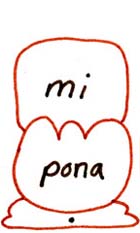
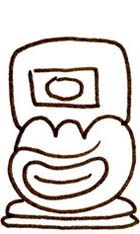
mi pona
Simple sentences with mi or sina as the subject, and an intransitive verb are a good place for us to start, because the glyph blocks simply stack one upon another.
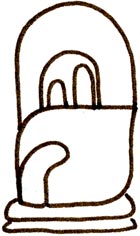
sina suli.

When building sentences, we work from top to bottom, and from left to right. Here are two examples of sentences built from the top down. Notice how the punctuation works as one more glyph in the stack.
With simple sentences of only two words, you have the choice to stack the glyphs, or place them side by side:
placed in front, tucked behind
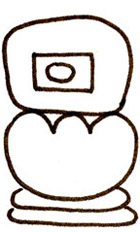
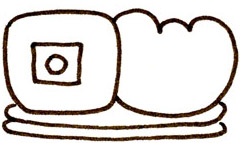
mi moku.
Don’t be confused when one glyph appears in front of or tucked behind the other. This has more to do with legibility than word order. Notice in the examples, mi is behind pona in mi pona, is resting on moku in the vertical mi moku, and is in front of moku in the horizontal mi moku. All of these variations are acceptable, and as you work through more complex sentences, you will start to notice situations where one looks better than another.
punctuation
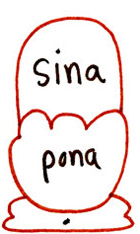
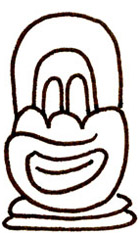
sina pona.
Notice in both variations of mi moku, above, the period glyph runs horizontal along the bottom. This will always be the case. Punctuation marks at the end of sentences work like pedestals for the sentence block to rest upon.
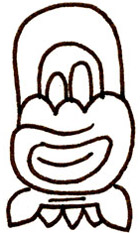
sina pona!
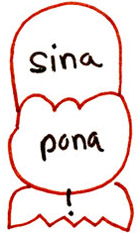
Compare the two examples of sina pona, one with a period and one with an exclamation point. For the end of sentences, all punctuation glyphs work in the same way.
Sentences using li between the subject and verb

telo li pona.
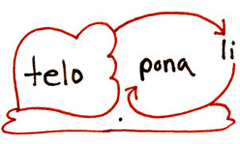
When the subject is other than mi or sina, li separates the subject from the verb. In sitelen sitelen, it works by acting as a container for the verb. li is nothing more than a line which runs out of the subject, and around the verb. Remember, down and to the right, so li must follow this pattern:
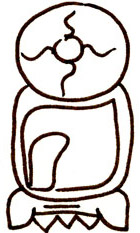
suno li suli.
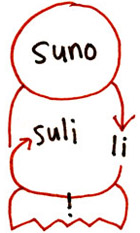
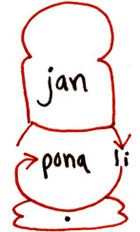
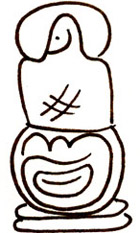
jan li pona.
